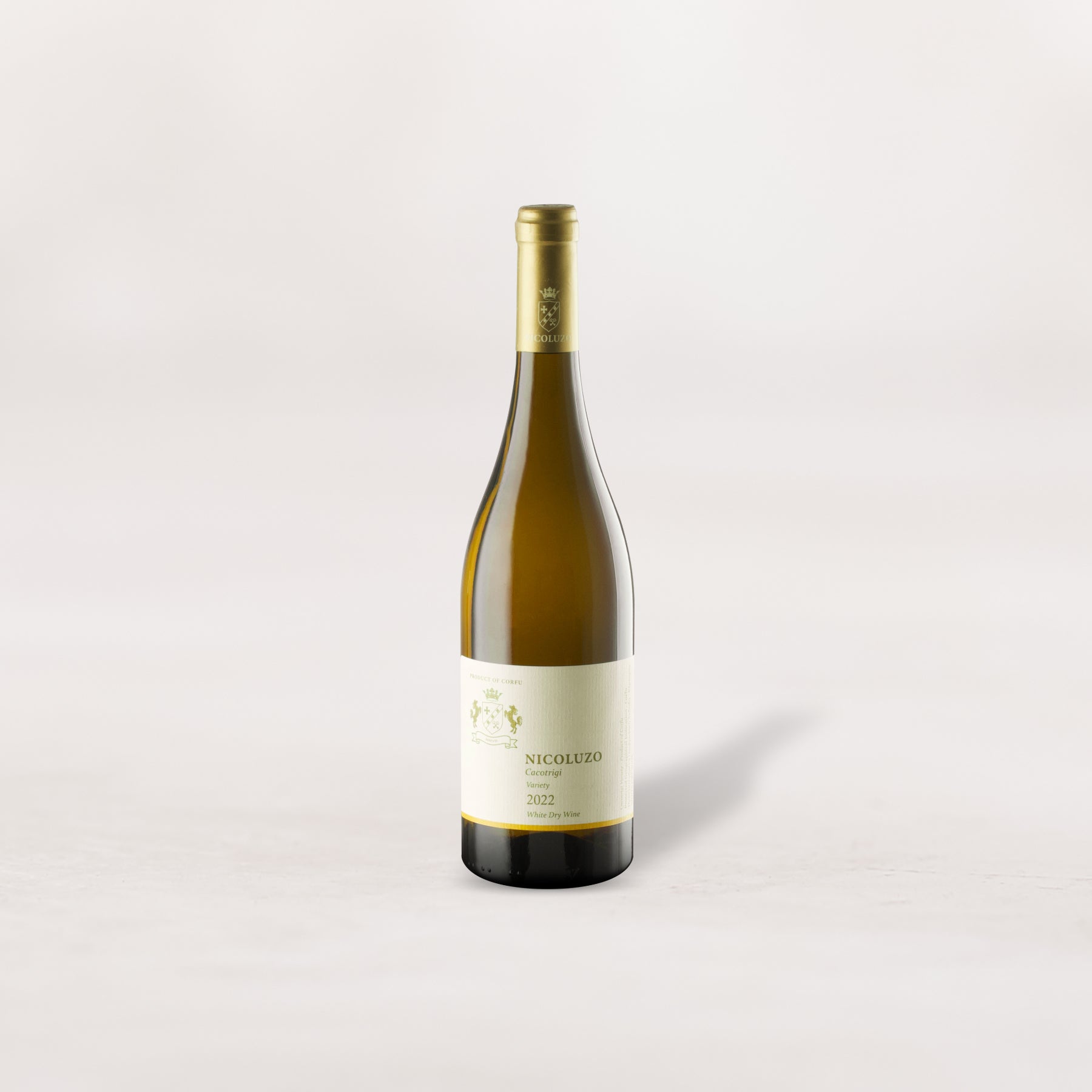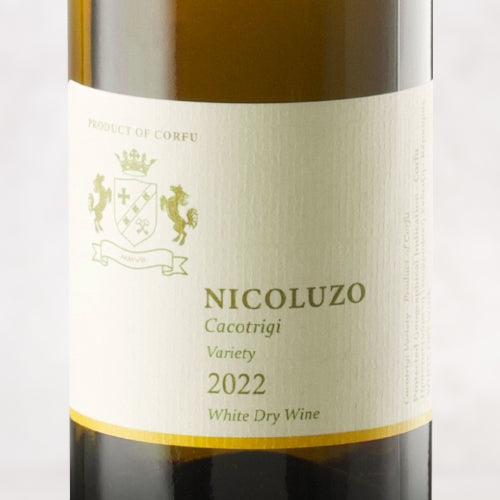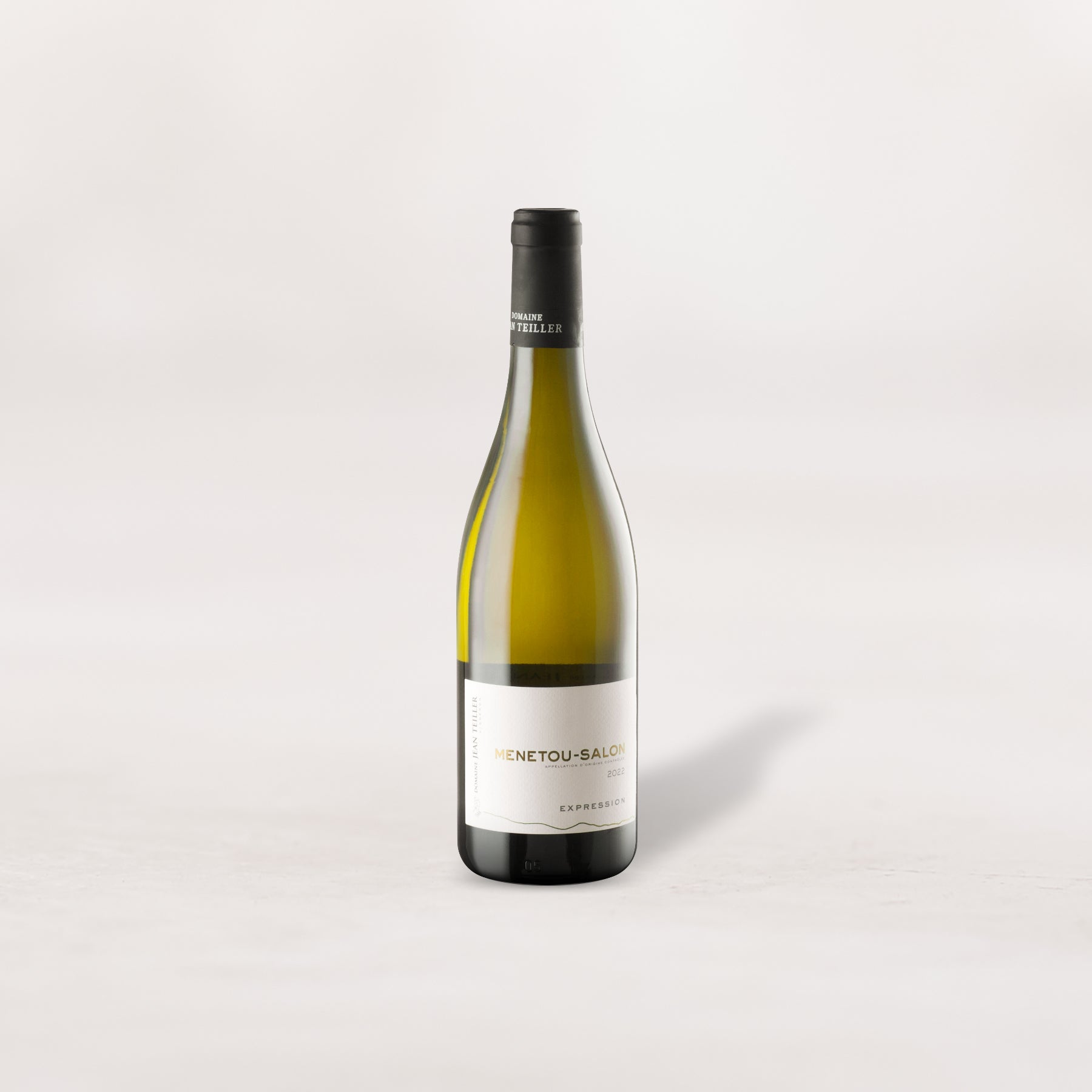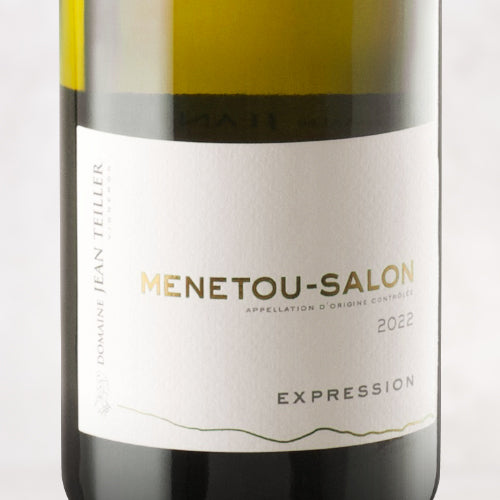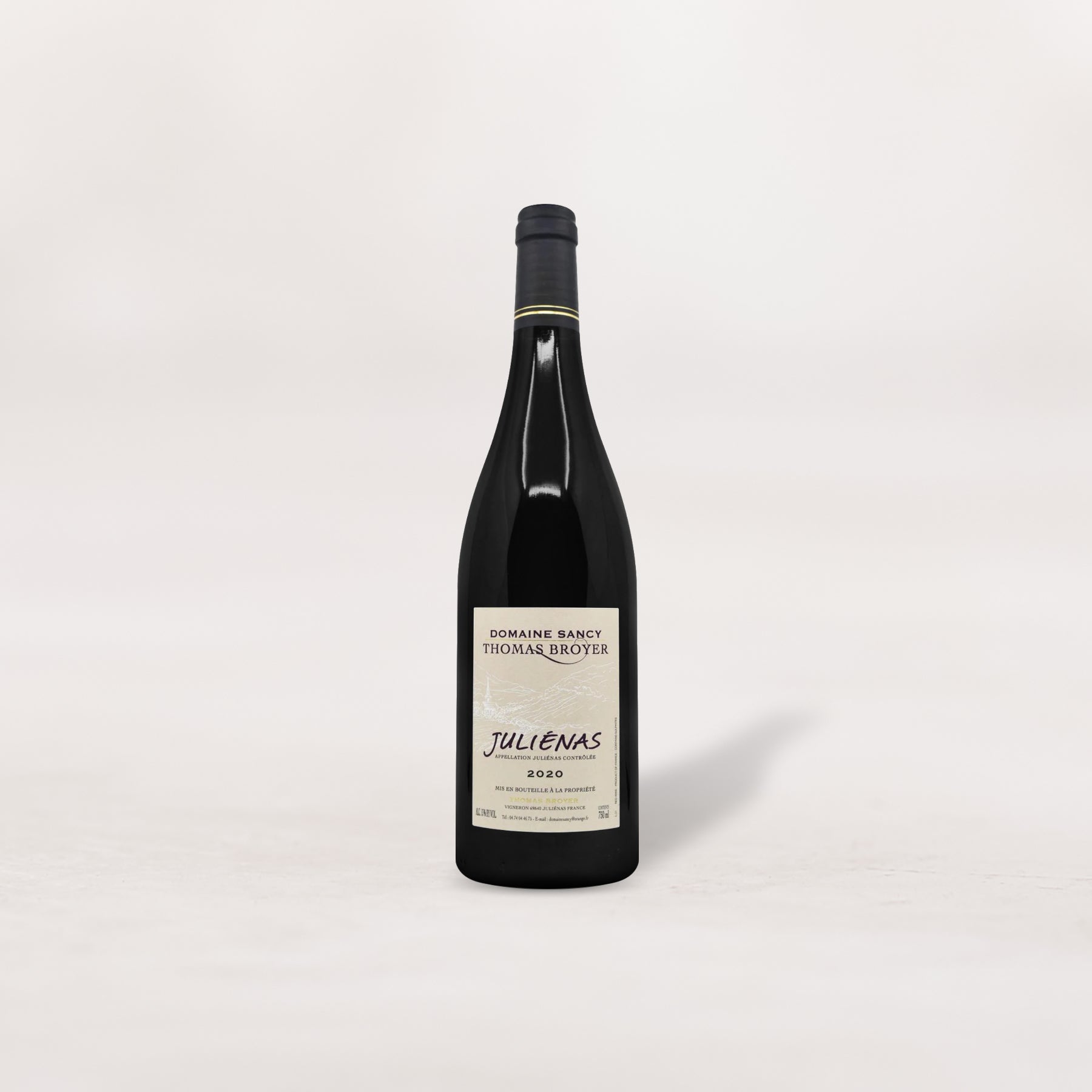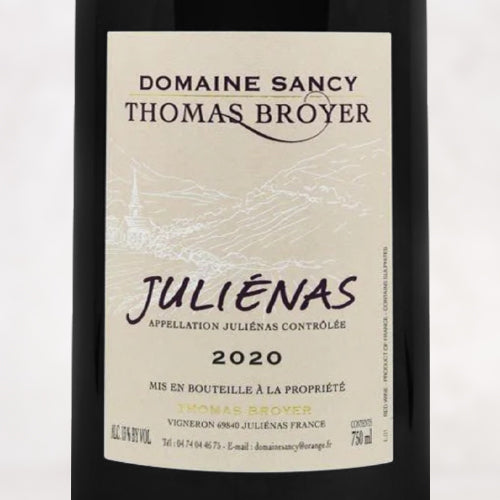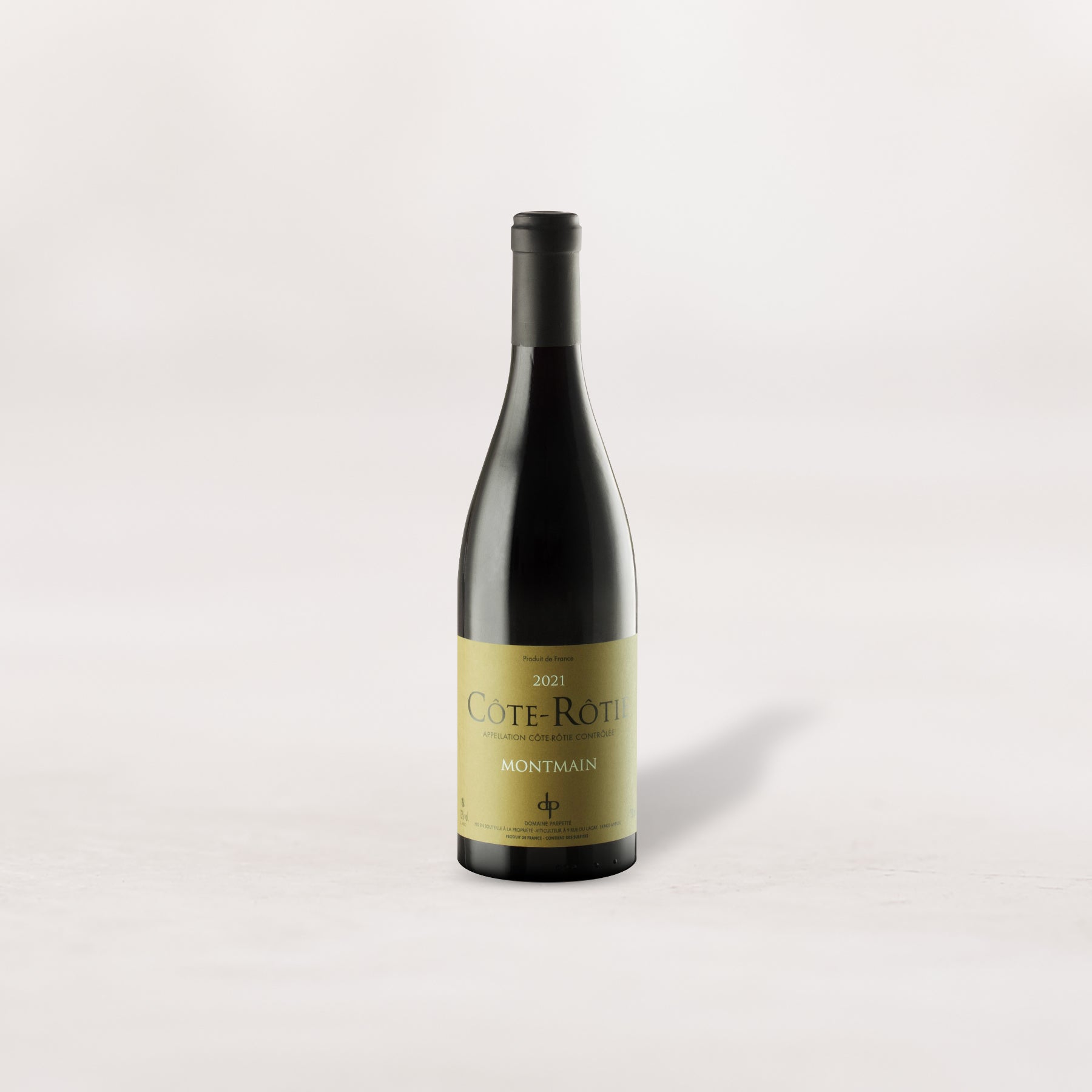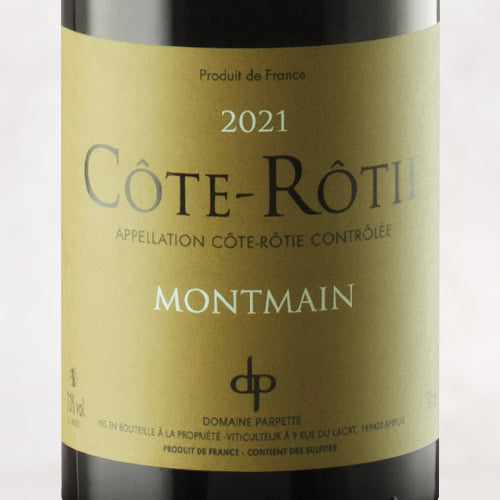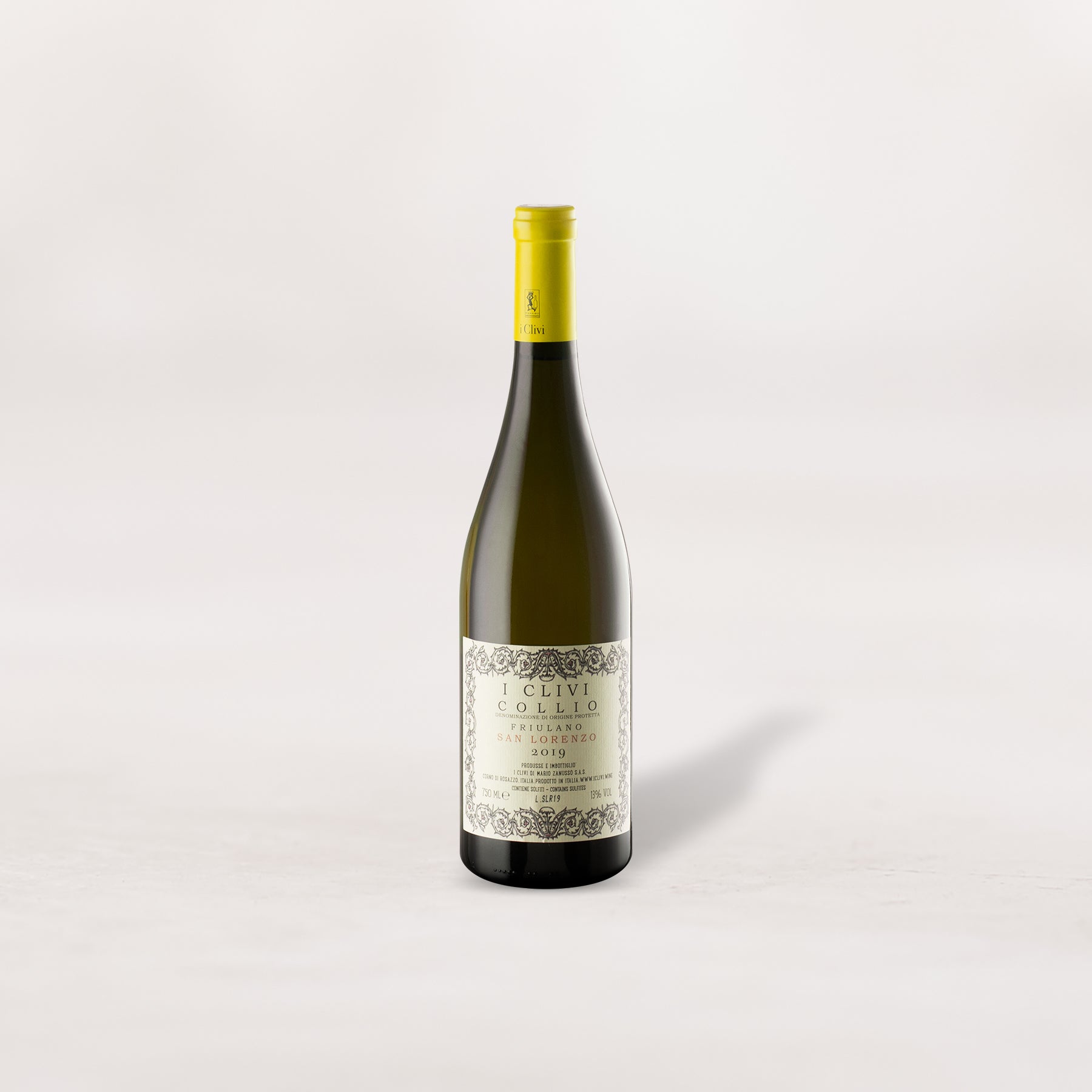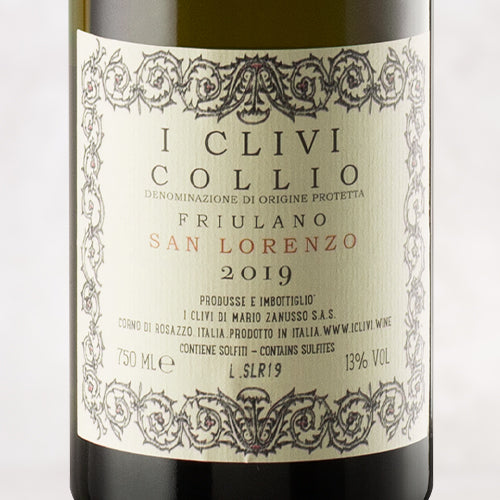Let’s cut right to the chase: I Clivi makes some of the greatest white wines in Italy. And, just so we’re clear, that’s not damning them with faint praise—their wines, especially those from the native Friuliano grape, stand toe-to-toe with the greats of the Old World, be it white Burgundy, Sancerre, Austrian Grüner Veltliner, and so forth. Overall, the white wines of Friuli-Venezia Giulia (and some of their “orange” siblings) have been demanding entry into the world’s elite ranks for a while now, only to be denied entry by gatekeepers with a badly outdated image of Italian white wine. Well, we’re back with an affordable, and relatively new, bottling from I Clivi that demands an audience: It’s an old-vine, single-vineyard Friulano from a site in the heart of Friuli’s Collio DOC—arguably the top white wine terroir in Italy—and it (over) delivers on every level. There’s complex aromas, profound minerality, mouth-watering acid, and serious structure. It’s an incredibly accomplished white wine at this price, so please, do yourself a favor and get some on your table a.s.a.p.!
We’ve sung the praises of I Clivi, and the Friulano variety (a genetic mutation of Sauvignon Blanc), countless times—and yet, each time we decide to offer something new from this estate, we’re compelled to “make the case” for Friulian white wine all over again. This really shouldn’t be necessary at this point, but here goes: Positioned roughly equidistant from both the Carnic Alps and the Adriatic Sea, the best hillside terroirs of Friuli-Venezia Giulia—and especially the Collio and Colli Orientali del Friuli DOCs, which hug Italy’s border with Slovenia—are blessed with mineral-rich soils of marl and sandstone known locally as ponca. The push-pull of mountain and sea-borne air currents is also critical in producing whites which combine ripeness and intensity with bright, well-preserved acidity. During the day, there’s plenty of warmth and sunshine, while at night, Alpine currents cool down the vines and, ultimately, help lengthen the overall growing season—allowing grapes to develop proper physiological maturity, and the aromatic complexity that engenders.
The story of Friulano, long known as “Tocai Friulano,” has also been recounted here often: Some factions believed that this indigenous variety was related to the Furmint grape of Hungary’s Tokaji region. Producers in Alsace called Pinot Gris “Tokay d’Alsace” and Australians made “Tokay” dessert wines from Muscadelle. This muddle was resolved, finally, in 2008, when Hungary was officially given sole use of the name, because it is a “place” name there, attached to their famed golden nectars from the region. Since then, Friulians have bottled wines from the grape as just “Friulano.” As DNA research has proved, Friulano is a distant relative of Sauvignon Blanc known as Sauvignonasse, or Sauvignon Vert (“green” Sauvignon). While there are occasions when Friulano skews toward Sauvignon Blanc in style, it is only in the subtlest of ways and it is rather rare. Name notwithstanding, the best Friulanos are not especially “green,” either in color (they typically have a more silvery cast) or in flavor (there’s much less, if none, of the pyrazine/herbal influence that characterizes Sauvignon Blanc). Friulano is typically more richly textured and lower in acidity than Sauvignon Blanc as well.
The I Clivi estate, meanwhile, was founded by Ferdinando Zanusso in the mid-1990s after he purchased an old, two-hectare vineyard in the town of Brazzano di Cormòns. Zanusso grew up in nearby Treviso, and his father had made wine, but he spent some 30 years working in West Africa before returning home to make wine. He was quickly followed into viticulture and winemaking by his son, Mario, who continues to run the property today on a resolutely artisanal scale: Their 12 hectares of vineyards are Certified Organic and dry-farmed (i.e. non-irrigated), and they eschew the use of oak for aging their whites. Although they also make precise, high-toned examples of Malvasia and Ribolla Gialla, their two signature whites are their “cru” bottlings of Friulano: “Galea,” from 70-year-old vines in the Colli Oriental del Friuli DOC, and “Brazan,” from 80-year-old plantings in Collio.
“San Lorenzo” is a newer, more affordable bottling that nevertheless hails from heirloom vineyards (average vine age is 80 years) in Brazzano—specifically, a parcel that surrounds the San Lorenzo Church on a hillside known as Monte Quarin. It is hand-harvested and vinified on ambient yeasts in stainless steel, where it rests on its lees for 12 months before bottling. In the glass, it shines a pale straw-gold moving to silvery-green reflections at the rim. The aromatics include notes of apricot, kumquat, lemon zest, white flowers, wild herbs, lavender, wet stones and a hint of nutmeg. It is beautifully balanced, with some pleasing viscosity on the palate balanced by fresh acidity and a stony, savory mineral component. Traditionally, Friulano is the wine the local osteria serves you alongside a plate of Friuli’s Prosciutto di San Daniele, and while we’d hardly object to enjoying this wine that way, you need to break out a recipe from Friuli’s greatest American culinary ambassador, Lidia Bastianich. This combination will make you a Friulano believer, guaranteed. Don’t miss it!
